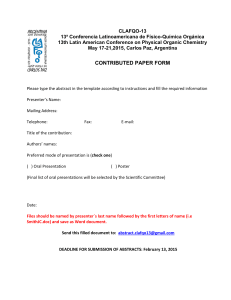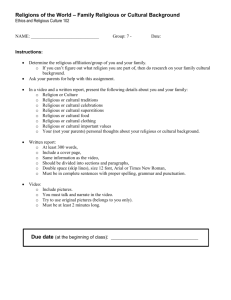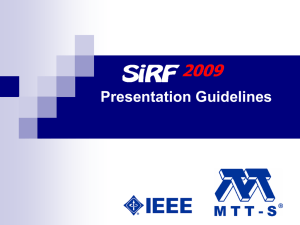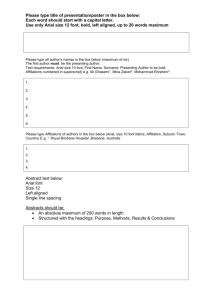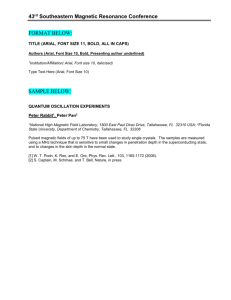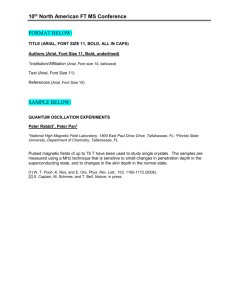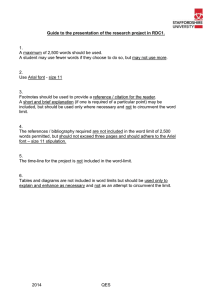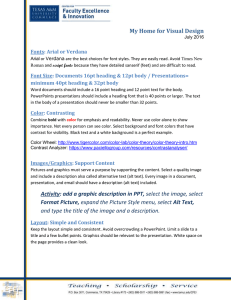How to Present a Seminar Paper: A Speaker’s Guide
advertisement
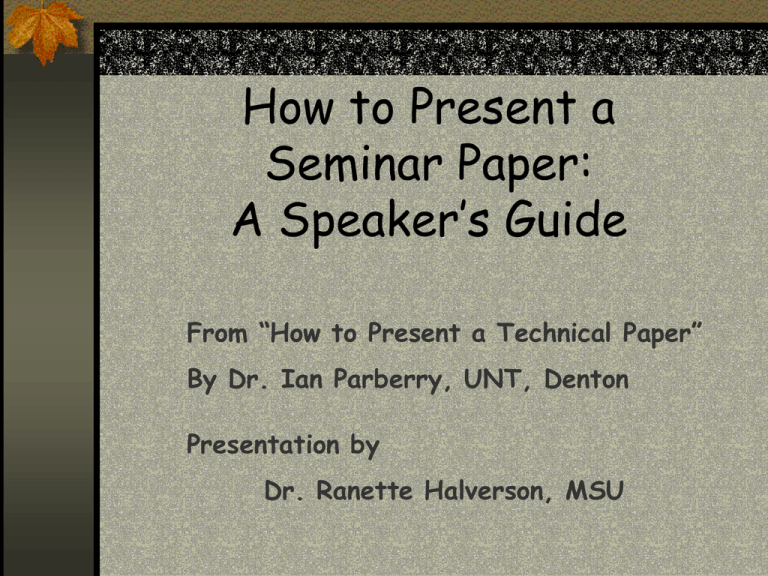
How to Present a Seminar Paper: A Speaker’s Guide From “How to Present a Technical Paper” By Dr. Ian Parberry, UNT, Denton Presentation by Dr. Ranette Halverson, MSU Presenting a Paper My Pet Peeves Reading to the audience Running over the time limit Slides too small to read Speaking to the wall Tracing Code Lengths of Talks Be fully aware of your time limit Conferences – 20 minutes 50 minutes 15 Classroom 15 – 45 minutes Allow time for questions Rules for Presentations Intro: Tell them what you are going to tell them Body: Tell them Conclude: Tell them what you told them Outline of Presentation Introduction Body Technical Issues Conclusion Introduction Start with anecdote Define the problem/issue Motivate the audience Introduce the terminology Discuss earlier work Remind, Don’t assume Provide a road map Body What is happening? What is going to happen? Social, legal, cultural implications? At least one set of statistics Use several pictures/images Technical Issues What is the state of the technology? What are potential solutions? The point is to provide a flavor of the technical details Conclusion Briefly review the talk, indicating the important concepts Hindsight is clearer than foresight Give open problems Indicate your talk is over Reaching the Audience Use Repetition Don’t get bogged down in details Know your audience!!!! Don’t run over your time limit Power Point Guidelines NO complete sentences Do not overload slides Do not use too many slides Do use diagrams, tables, pictures Very little animation – if any Be very careful with color, fonts Light background, Dark font REQUIRED Projector Test your slides with a projector Pale tends to fade out (e.g. yellow on light background) Keep a high contrast See how this looks See how this looks Fonts (44 pt) Arial - 32 point font - bold Arial - 36 point font Arial - 40 point font Times New Roman – 40 point Verdana -36 point Georgia – 40 point Forte – 40 point Animation - Motion Use very judiciously Distracting to audience Distracts speaker from the talk Use occasionally for effect Conclusion Thank you for your attention! Any questions? References


